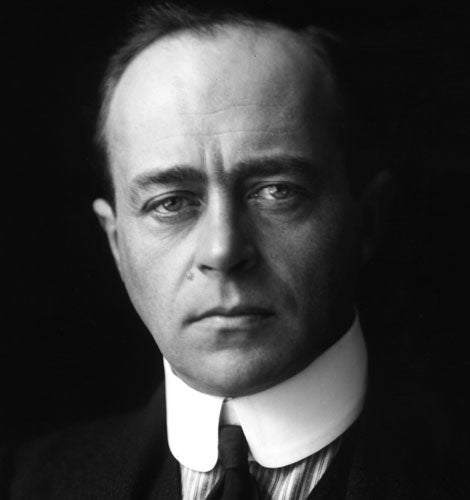Frozen in time: Captain Scott's huts
£3.5m raised to preserve quarters that sheltered adventurer on doomed South Pole mission

For those few hundred visitors who make the long journey by ship each year to see the hut for themselves, it looks eerily as if the adventurers had just stepped outside. Yet it is nearly a century since Robert Falcon Scott and his men embarked on their doomed march to the South Pole, an episode that was to go down as one of the most vainglorious in the heroic age of exploration.
Today their huts at Cape Evans on Ross Island, complete with preserved jars of Heinz Indian Relish, tins of boiled cabbage and still-edible pats of butter, are undergoing a vital restoration. Here, where Scott's party endured a gruelling Antarctic winter as they planned their assault on the South Pole, conservationists hope to restore for future generations a permanent monument to the bravery of the men who gave up comfortable middle class lives to risk all in the blizzards and sub-zero temperatures.
Nearly £3.5m has been raised to safeguard the quarters which became a microcosm of Edwardian society during the opening stages of the Terra Nova Expedition of 1910-13, Scott's second and final foray on to the frozen continent.
The most urgent work has already begun as experts announced this week that they had uncovered 300 new artefacts belonging to the expedition. But time and the elements are stacked against the future survival of Scott's hut and its 8,000 items of equipment and expedition memorabilia, and it has been declared one of the most endangered sites in the world by the World Monument Fund.
Philippa Foster Back, whose grandfather was part of Scott's 1910 team that helped build the camp, chairs the UK Antarctic Heritage Trust. "We are in a race against time to preserve this irreplaceable part of our heritage. The end of the fundraising is in sight but the final mile is going to be the hardest," she said.
The fundraising effort, which is being led in Britain and New Zealand but has drawn support from around the world, is seeking another £175,000. Half the money has been donated by the private February Foundation, with the balance coming from small donors and polar enthusiasts. It is hoped the work will be finished in time for the centenary celebrations in 2014 when millions will be able to pay a virtual visit to the hut via the internet. But much work must be done before then. Wind deflectors have been fitted to prevent recent heavy snow from building up around the prefabricated dwelling and crushing it. Last year 85 tonnes had to be shovelled away from the structure and water from melting ice continues to endanger the interior.
Stoves, lights, clothes, bedding and harnesses for the team of dogs remain where they were left. Objects such as tins, corks, scientific test tubes and compressed "patent" coal bricks from Cardiff remain intact.
Sir David Attenborough, one of the campaign's leading supporters, described the base as "a time warp without parallel". "You walk into Scott's hut and you are transported to the year 1912 in a way that is quite impossible anywhere else in the world. Everything is there," he said. The actor and presenter Michael Palin has described it as "one of the great memorials to exploration anywhere on earth".
The 15m by 8m hut was built by Scott and his team when they landed in Antarctica in 1911. It took a week to erect but was well-loved by the men who called it home despite the hardships they endured there. In his journal, Scott observed: "The hut is becoming the most comfortable dwelling-place imaginable. We have made ourselves a truly seductive home, within the walls of which peace, quiet and comfort remain supreme. Such a noble dwelling transcends the word "hut", and we pause to give it a more fitting title only from lack of the appropriate suggestion."
By the time of his return to the Arctic, Scott had become a hero of Edwardian society and the expedition enjoyed support from the government and people alike. Schools and churches raised money to buy blankets and tents, and news of their progress was eagerly awaited back home. Scott recreated the social structures within the quarters that he had known from the navy. A bulkhead of bottled supplies partitioned the living area. Space was set aside for the 16 officers and scientists. The men bedded down in the wardroom at the east end and dined in the messdeck at the west end. The wardroom was dominated by a large table and spindle-backed chairs. On Sundays the table was covered with a dark blue cloth, although for ordinary meals it was covered with a white oilcloth. There was also a player piano and an HMV gramophone. At the eastern end a darkroom was built and workbenches were constructed for the scientists to conduct their experiments. The men amused themselves by working hard and giving lectures on their specialised subjects – anything from watercolour painting to the history of Japan. On special feast days such as mid-winter's night, they dined on roast seal.
Scott's goal was to beat his rival Roald Amundsen to the Pole. He had been greatly disconcerted on learning that the Norwegian changed his plans to conquer the North Pole after a successful American expedition and set sail for Antarctica instead to challenge him head on.
In the end Scott, 43, and his party of four were narrowly beaten to the prize and it was on the return journey that they perished amid scenes of unimaginable suffering. The last entry in the explorer's diary dated 29 March 1912 reads: "Had we lived, I should have had a tale to tell of hardihood, endurance and courage... which would have stirred the hearts of every Englishman. These rough notes and our dead bodies must tell the tale."
Join our commenting forum
Join thought-provoking conversations, follow other Independent readers and see their replies
Comments